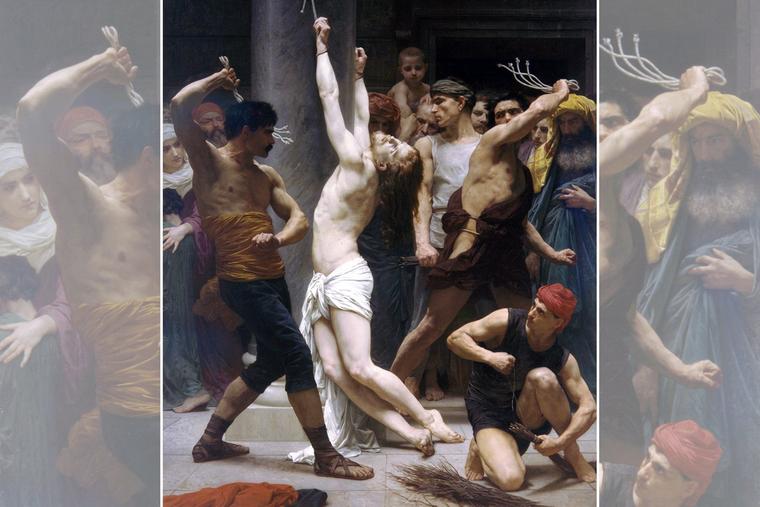- Feb 5, 2002
- 166,616
- 56,252
- Country
- United States
- Faith
- Catholic
- Marital Status
- Married
- Politics
- US-Others
ROSARY & ART: The Second Sorrowful Mystery, the Scourging at the Pillar
(Matthew 27:26; Mark 15:15; Luke 23:16; John 19:1, 4-5)
The Rosary’s Sorrowful Mysteries pass over a significant expanse of time in silence. From Jesus’ arrest in Gethsemane to the scourging there has occurred:
Why did Pilate scourge Jesus? Three reasons. Pilate probably hoped that some physical punishment might satiate the almost manic bloodlust of the contrived mob staged in front of his praetorium. If Jesus was guilty of anything, scourging would be a salutary punishment. (Remember, Roman citizens and non-Roman citizens had different standing before Roman law, e.g., a Roman could not be crucified.) And, just in case Jesus (or any in the crowd) had ideas about challenging Roman rule or doing anything else illegal, a good flagellation should disabuse them of such notions.
Continued below.

 www.ncregister.com
www.ncregister.com
(Matthew 27:26; Mark 15:15; Luke 23:16; John 19:1, 4-5)
The Rosary’s Sorrowful Mysteries pass over a significant expanse of time in silence. From Jesus’ arrest in Gethsemane to the scourging there has occurred:
- a prolonged kangaroo court night trials before [bless and do not curse][bless and do not curse][bless and do not curse][bless and do not curse] sittings of the Sanhedrin, in which the Jewish Temple establishment physically abused Jesus;
- the Apostles’ flight;
- Peter’s denials;
- a likely night of further torture and imprisonment until morning;
- the transfer of the Jewish case against Jesus on concocted charges to the Roman procurator, Pontius Pilate;
- Pilate’s attempt to divert the case by sending Jesus to Herod Antipas; and
- Pilate’s temporizing, aimed at avoiding having to sentence Christ himself.
Why did Pilate scourge Jesus? Three reasons. Pilate probably hoped that some physical punishment might satiate the almost manic bloodlust of the contrived mob staged in front of his praetorium. If Jesus was guilty of anything, scourging would be a salutary punishment. (Remember, Roman citizens and non-Roman citizens had different standing before Roman law, e.g., a Roman could not be crucified.) And, just in case Jesus (or any in the crowd) had ideas about challenging Roman rule or doing anything else illegal, a good flagellation should disabuse them of such notions.
Continued below.

Jesus Bore in His Flesh the Sins We Commit in Ours
ROSARY & ART: The Second Sorrowful Mystery, the Scourging at the Pillar
